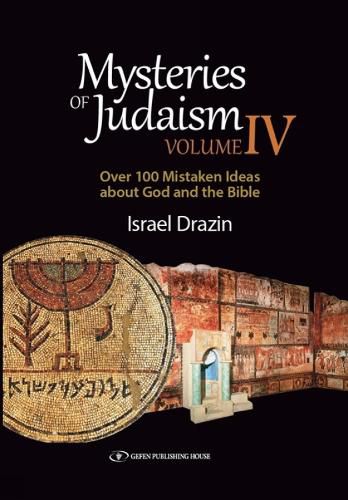Readings Newsletter
Become a Readings Member to make your shopping experience even easier.
Sign in or sign up for free!
You’re not far away from qualifying for FREE standard shipping within Australia
You’ve qualified for FREE standard shipping within Australia
The cart is loading…






The Bible has a style that most people do not know and as a result they fail to understand what the Bible is saying. In many cases this causes them to misunderstand Judaism. Below are some examples. The Torah does not tell us everything and leaves much to the readers imagination. Stories often have other, unrelated stories mixed in regardless of the insertion not having any relationship to the main tale. Scripture frequently repeats itself. Most numbers in the Torah are arguably exaggerated to highlight the event. Repetition often seems to conflict with a prior description in a significant manner. Differences in spelling occur frequently. A good example is in the two versions of the Decalogue. We can only guess at the meaning of many biblical words. The Torah was divided into chapters by Christians. The Jews accepted most of these divisions even though they are not always rational. Rabbi Akiva, Rashi, most synagogue sermons, and others insist that the Torah is in divine language, with God saying exactly what God wants said. Rabbi Ishmael, Maimonides, ibn Ezra, and many others take the view of the Torah speaking in human language, with repetitions not teaching new lessons, but only repeated for emphasis or a similar reason. Some commentators, such as Nachmanides, are convinced that the Torah is composed in a mystical code. Scripture frequently, yet briefly describes an event, leaving out details, which it later adds when the story of the event is repeated. Both rabbis and scholars differ among themselves whether certain biblical stories or events are actually history or a dream or parable. One can better understand Biblical stories by comparing them with other similar tales in the Bible and outside the Bible. The numbers 3, 7, and 10 (being a combination of the first two), occur frequently.
$9.00 standard shipping within Australia
FREE standard shipping within Australia for orders over $100.00
Express & International shipping calculated at checkout
The Bible has a style that most people do not know and as a result they fail to understand what the Bible is saying. In many cases this causes them to misunderstand Judaism. Below are some examples. The Torah does not tell us everything and leaves much to the readers imagination. Stories often have other, unrelated stories mixed in regardless of the insertion not having any relationship to the main tale. Scripture frequently repeats itself. Most numbers in the Torah are arguably exaggerated to highlight the event. Repetition often seems to conflict with a prior description in a significant manner. Differences in spelling occur frequently. A good example is in the two versions of the Decalogue. We can only guess at the meaning of many biblical words. The Torah was divided into chapters by Christians. The Jews accepted most of these divisions even though they are not always rational. Rabbi Akiva, Rashi, most synagogue sermons, and others insist that the Torah is in divine language, with God saying exactly what God wants said. Rabbi Ishmael, Maimonides, ibn Ezra, and many others take the view of the Torah speaking in human language, with repetitions not teaching new lessons, but only repeated for emphasis or a similar reason. Some commentators, such as Nachmanides, are convinced that the Torah is composed in a mystical code. Scripture frequently, yet briefly describes an event, leaving out details, which it later adds when the story of the event is repeated. Both rabbis and scholars differ among themselves whether certain biblical stories or events are actually history or a dream or parable. One can better understand Biblical stories by comparing them with other similar tales in the Bible and outside the Bible. The numbers 3, 7, and 10 (being a combination of the first two), occur frequently.